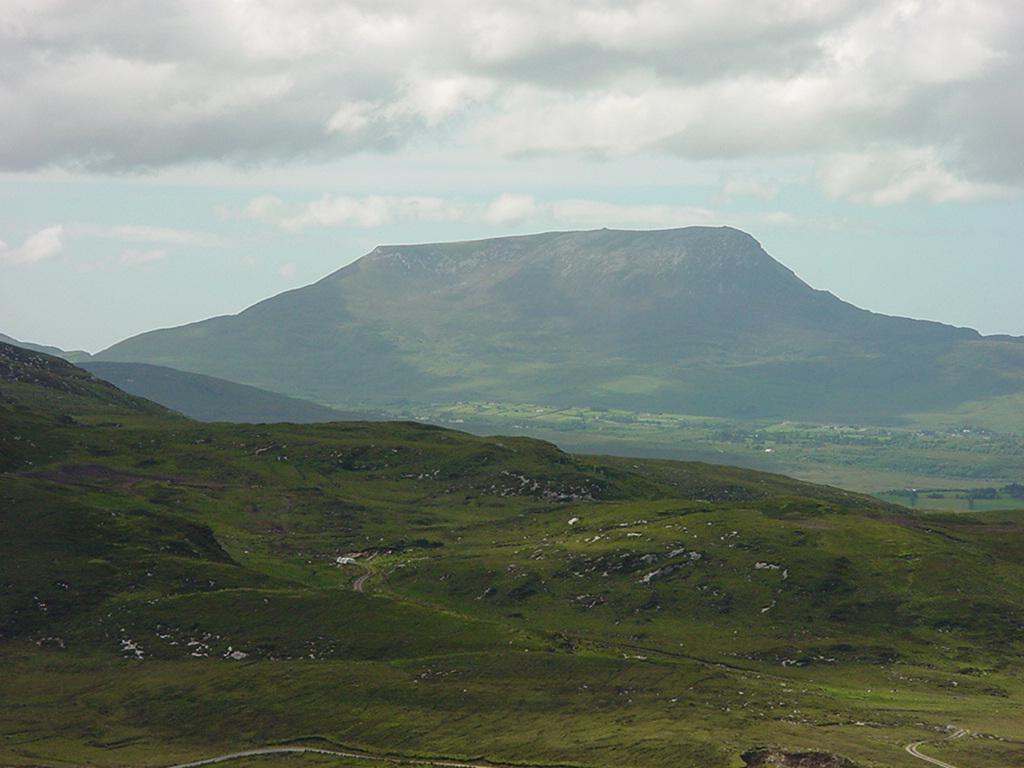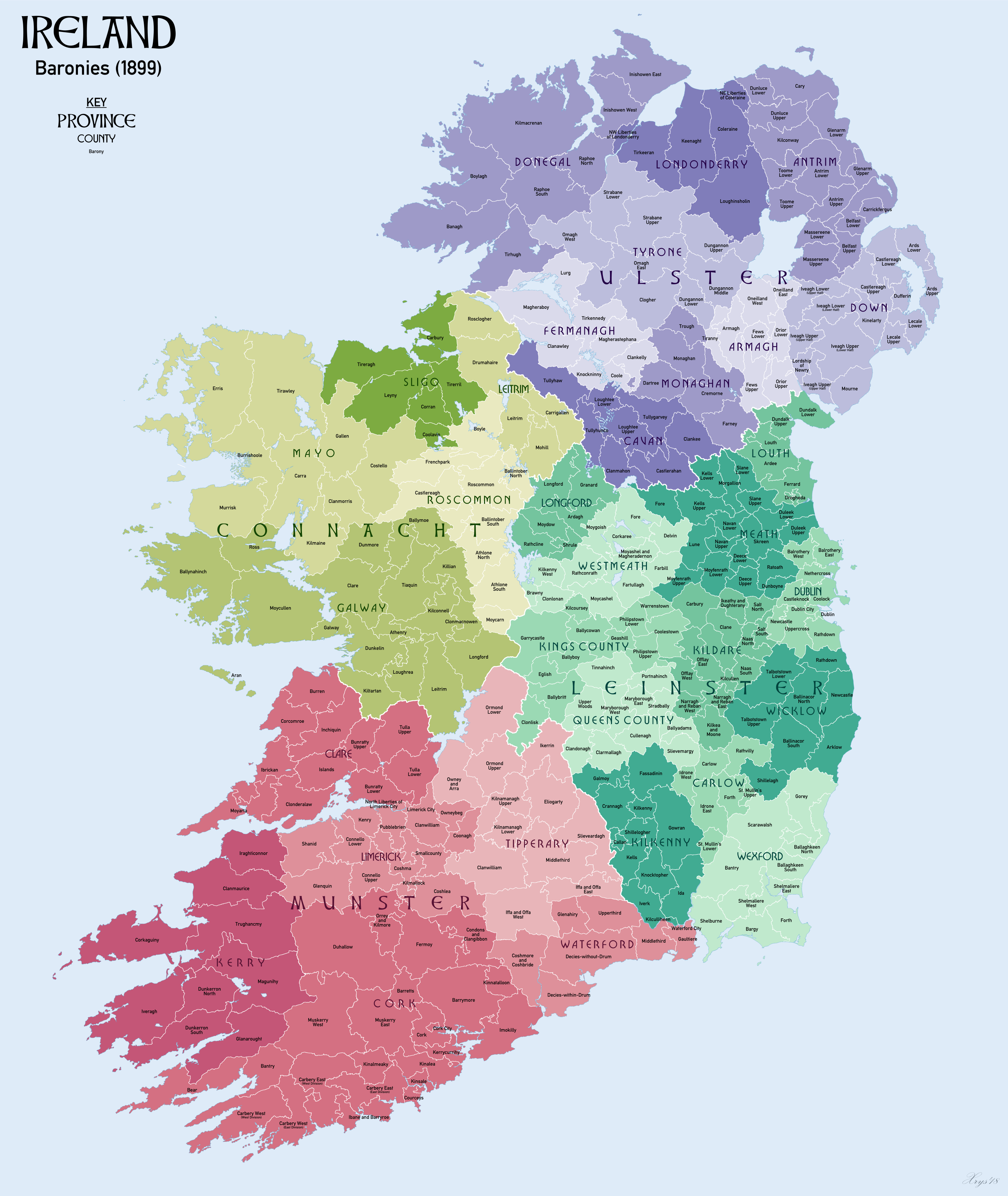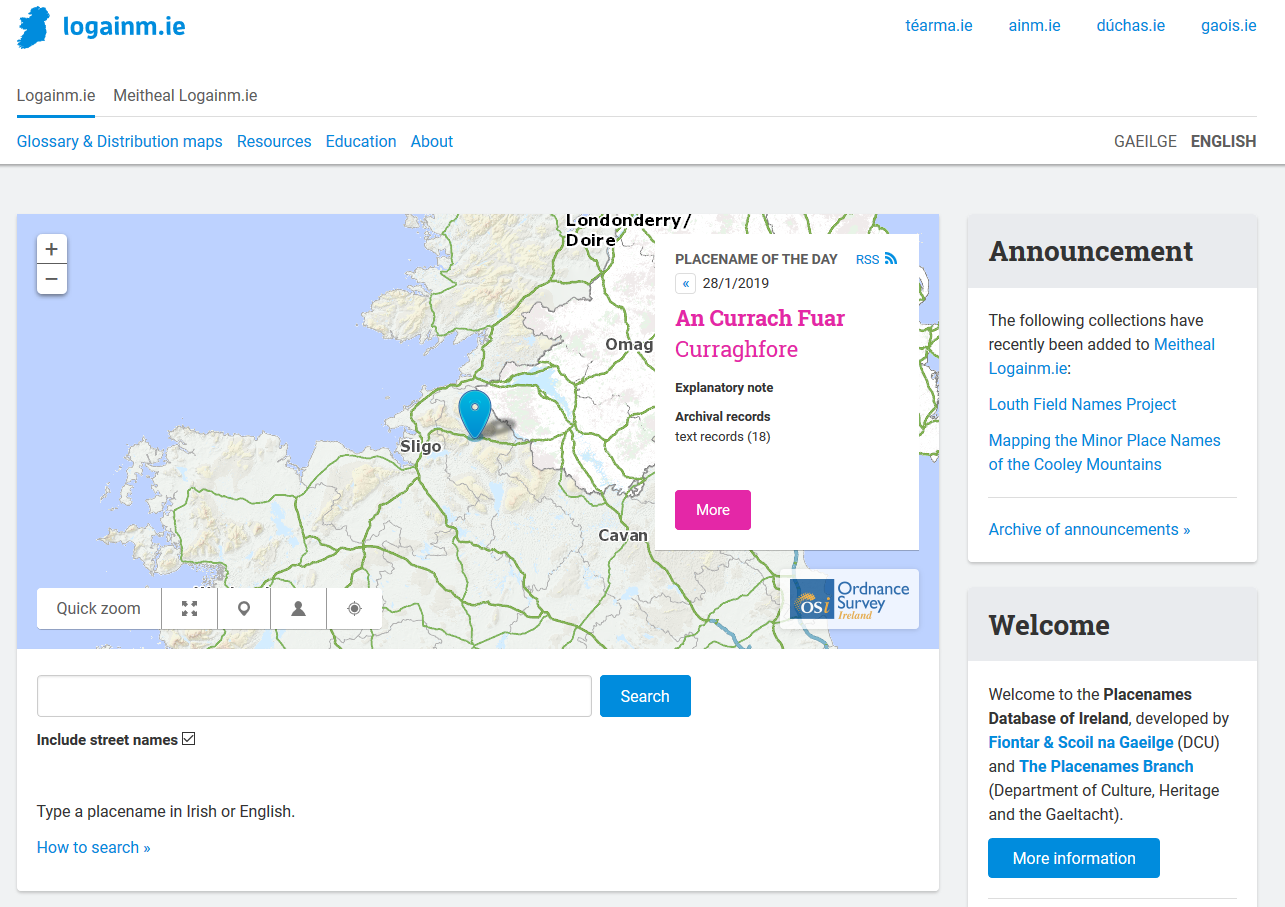|
Creeslough
Creeslough ( , locally ; ) is a village in County Donegal, Ireland, south of Dunfanaghy on the N56 road (Ireland), N56 road. It overlooks an arm of Sheephaven Bay, with the population of the surrounding area engaged mainly in agriculture, mostly livestock rearing. Name The English name 'Creeslough' (occasionally 'Cresslough') is an anglicisation, anglicised respelling of an Irish name, the modern official spelling of which is (including the definite article ). According to the Placenames Database of Ireland, this means "the gorge". Under the Official Languages Act 2003, only the Irish name of Creeslough Electoral division (Ireland), electoral division has official status, because part of it is in the Gaeltacht, whereas Creeslough village is outside the Gaeltacht and its English name has equal status. is usually interpreted as +; where means "lake", while literally means "gullet, throat" and metaphorically can mean either a gap or gluttony. In the 1830s, John O'Donovan (sc ... [...More Info...] [...Related Items...] OR: [Wikipedia] [Google] [Baidu] |
Sheephaven Bay
Sheephaven Bay or Sheep Haven () is a broad, shallow inlet on the north coast of County Donegal, Ireland. Bounded by the peninsulas of Rosguill to the east and Horn Head () to the west, the bay is relatively protected from the full force of the Atlantic Ocean, and has supported a large herring fleet. Etymology The Irish language, Irish name may be a recent translation of the English name to Irish. Some older maps say "Ship Haven", with Irish translation , but this is considered incorrect. Doe Castle Sheephaven Bay is home to Doe Castle, located near Creeslough, which was built in the early 16th century. The castle, which still stands, was a stronghold for the Clan Sweeney (Clan Sweeney, Clan Suibhne) for 200 years. Settlements around the bay *Carrigart *Creeslough *Downings *Dunfanaghy *Horn Head *Marble Hill, County Donegal, Marble Hill *Portnablagh References Bays of County Donegal {{Donegal-geo-stub ... [...More Info...] [...Related Items...] OR: [Wikipedia] [Google] [Baidu] |
Kilmacrenan (barony)
Kilmacrenan (), sometimes spelled Kilmacrennan, is a barony in County Donegal, Ireland. Baronies were mainly cadastral rather than administrative units, which acquired modest local taxation and spending functions in the 19th century before being superseded by higher units under the Local Government (Ireland) Act 1898. Kilmacrenan is the largest barony in Ireland by land area. Etymology Kilmacrenan takes its name from Kilmacrenan village, in Irish ''Cill Mhic Réanáin'' or 'Cill Mhic nÉanáin'', "church of the sons of Eanan." Geography Kilmacrenan is located in the north of County Donegal, to the west and north of Lough Swilly and the River Swilly. With an area of 312,410 acres, it is the largest barony in Ireland. History Kilmacrenan was the ancient territory of the O'Donnell kings of Tyrconnell, O'Breislein (O'Breslin), Mac Sweeneys, O'Begley, O'Friel, O'Kernaghan of Clondavaddog, McCoyle of Mevagh, O'Toner of Tullyfern and O'Laherty (Laverty). Clann Chinnfhaelaidh is in ... [...More Info...] [...Related Items...] OR: [Wikipedia] [Google] [Baidu] |
Lawrence Donegan
Lawrence Donegan (born 13 July 1961) is a Scottish journalist and former musician.Lawrence Donegan ''The Guardian'' Life and career Donegan was born on 13 July 1961 in , and educated at in Stirling and at the , where his musical career began. He was the |
Doe Castle
Doe Castle, or Caisleán na dTuath, near Creeslough, County Donegal, was the historical stronghold of Clan tSuibhne (Clan McSweeney), with architectural parallels to the Scottish tower house. Built in the early 15th century, it is one of the better fortalices in the north-west of Ireland. The castle sits on a small peninsula, surrounded on three sides by water, with a moat cut into the rock of the landward side. The structure consists mainly of high outer walls around an interior bawn with a four-storey tower-house or keep. History Doe Castle was most likely built c.1420 by the Quinn family, but by the 1440s, it had come into the hands of the gallowglass MacSweeney family. The castle remained in the hands of a branch of the Clan Sweeney known as ''Mac Suibhne na d'Tuath'' (Mac Sweeney Doe) for almost two hundred years until it was seized by King James VI and I because the MacSweeneys had rebelled against him. On 7 March 1613 during the Plantation of Ulster, the king granted ... [...More Info...] [...Related Items...] OR: [Wikipedia] [Google] [Baidu] |
Barony (Ireland)
In Ireland, a barony (, plural ) is a historical subdivision of a counties of Ireland, county, analogous to the hundred (county subdivision), hundreds into which the counties of England were divided. Baronies were created during the Tudor reconquest of Ireland, replacing the earlier cantreds formed after the original Norman invasion of Ireland, Norman invasion.Mac Cotter 2005, pp.327–330 Some early baronies were later subdivided into half baronies with the same standing as full baronies. Baronies were mainly cadastre, cadastral rather than administrative units. They acquired modest local taxation and spending functions in the 19th century before being superseded by the Local Government (Ireland) Act 1898. Subsequent adjustments of county boundaries mean that some baronies now straddle two counties. The final catalogue of baronies numbered 331, with an average area of ; each county was divided, on average, into 10 or 11 baronies. Creation The island of Ireland was "shired" i ... [...More Info...] [...Related Items...] OR: [Wikipedia] [Google] [Baidu] |
Gorge
A canyon (; archaic British English spelling: ''cañon''), gorge or chasm, is a deep cleft between escarpments or cliffs resulting from weathering and the erosion, erosive activity of a river over geologic time scales. Rivers have a natural tendency to cut through underlying surfaces, eventually wearing away rock layers as sediments are removed downstream. A river bed will gradually reach a baseline elevation, which is the same elevation as the body of water into which the river drains. The processes of weathering and erosion will form canyons when the river's River source, headwaters and estuary are at significantly different elevations, particularly through regions where softer rock layers are intermingled with harder layers more resistant to weathering. A canyon may also refer to a rift between two mountain peaks, such as those in ranges including the Rocky Mountains, the Alps, the Himalayas or the Andes. Usually, a river or stream carves out such splits between mountains. Exa ... [...More Info...] [...Related Items...] OR: [Wikipedia] [Google] [Baidu] |
Townland
A townland (; Ulster-Scots: ''toonlann'') is a traditional small land division used in Ireland and in the Western Isles of Scotland, typically covering . The townland system is of medieval Gaelic origin, predating the Norman invasion, and most have Irish-derived names. However, some townland names and boundaries come from Norman manors, plantation divisions, or later creations of the Ordnance Survey.Connolly, S. J., ''The Oxford Companion to Irish History, page 577. Oxford University Press, 2002. ''Maxwell, Ian, ''How to Trace Your Irish Ancestors'', page 16. howtobooks, 2009. Townlands cover the whole island of Ireland, and the total number of inhabited townlands in Ireland was 60,679 in 1911. The total number recognised by the Placenames Database of Ireland as of 2014 was 61,098, including uninhabited townlands. Etymology The term "townland" in English is derived from the Old English word ''tūn'', denoting an enclosure. The term describes the smallest unit of land di ... [...More Info...] [...Related Items...] OR: [Wikipedia] [Google] [Baidu] |
Holy Well
A holy well or sacred spring is a well, Spring (hydrosphere), spring or small pool of water revered either in a Christianity, Christian or Paganism, pagan context, sometimes both. The water of holy wells is often thought to have healing qualities, through the numen, numinous presence of its guardian spirit or Christian saint. They often have local legends associated with them; for example in Christian mythology, Christian legends, the water is often said to have been made to flow by the action of a saint. Holy wells are often also places of ritual and pilgrimage, where people Prayer, pray and leave votive offerings. In Celtic nations, Celtic regions, strips of cloth are often tied to trees at holy wells, known as clootie wells. Names The term ''haeligewielle'' is in origin an Old English language, Anglo-Saxon toponym attached to specific springs in the landscape; its current use has arisen through folklore scholars, antiquarians, and other writers generalising from those actual ' ... [...More Info...] [...Related Items...] OR: [Wikipedia] [Google] [Baidu] |
Ringfort
Ringforts or ring forts are small circular fortification, fortified settlements built during the Bronze Age, Iron Age and early Middle Ages up to about the year 1000 AD. They are found in Northern Europe, especially in Ireland. There are also many in South Wales and in Cornwall, where they are called rounds. Ringforts come in many sizes and may be made of stone or earth. Earthen ringforts would have been marked by a circular rampart (a bank and ditch), often with a palisade, stakewall. Both stone and earthen ringforts would generally have had at least one building inside. Distribution Ireland In Irish language sources they are known by a number of names: ' (anglicised ''rath'', also Welsh ), ' (anglicised ''lis''; cognate with Cornish language, Cornish '), ' (anglicised ''cashel''), ' (anglicised ''caher'' or ''cahir''; cognate with Welsh language, Welsh ', Cornish and Breton language, Breton ') and ' (anglicised ''dun'' or ''doon''; cognate with Welsh and Cornish ') ... [...More Info...] [...Related Items...] OR: [Wikipedia] [Google] [Baidu] |
Placenames Branch
The Placenames Database of Ireland (), also known as , is a database and archive of place names in Ireland. It was created by Fiontar, Dublin City University in collaboration with the Placenames Branch of the Department of Tourism, Culture, Arts, Gaeltacht, Sport and Media. The website is a public resource primarily aimed at journalists and translators, students and teachers, historians and researchers in genealogy. Placenames Commission and Placenames Branch The Placenames Commission () was established by the Department of Finance in 1946 to advise Ordnance Survey Ireland and the government of what the Irish name of places should be. Although both the 1922 Constitution of the Irish Free State and the current constitution adopted in 1937 recognised Irish as the national language, the law in regard to placenames was carried over from the 19th-century UK statutes which established the Ordnance Survey and Griffith's Valuation, under which only an English-language name had officia ... [...More Info...] [...Related Items...] OR: [Wikipedia] [Google] [Baidu] |
Niall Ó Dónaill
Niall Ó Dónaill (27 August 1908 – 10 February 1995) was an Irish language lexicographer from Ailt an Eidhinn, Loughanure, County Donegal, Ireland. He was the oldest of the six children of Tarlach ÓDónaill and Éilis NicRuairí from Grial, Loughanure. They had a little land and a few cows. His father, Tarlach, would spend June to November working for a farmer in Scotland and died when Niall was 13 years old. ÓDónaill himself spent summers working in the tunnels in Scotland. During his time at university, he spent his summers teaching at Coláiste Bhríde, Rann na Feirste. Ó Dónaill is most famous for his work as editor of the 1977 Irish-English dictionary , which is still widely used today. He received his education at in Loughanure before gaining a scholarship to St Eunan's College in Letterkenny. Another scholarship took him to University College Dublin to study Irish, English and History. In June 1982 he was awarded a D.Litt. by Trinity College Dublin. Ó ... [...More Info...] [...Related Items...] OR: [Wikipedia] [Google] [Baidu] |
Counties Of Ireland
The counties of Ireland (Irish language, Irish: ) are historic administrative divisions of the island. They began as Normans in Ireland, Norman structures, and as the powers exercised by the Cambro-Norman barons and the Old English (Ireland), Old English nobility waned over time, new offices of political control came to be established at a county level. The number of counties varied depending on the time period, however thirty-two is the traditionally accepted and used number. Upon the partition of Ireland in 1921, six of the traditional counties became part of Northern Ireland. In Northern Ireland, Counties of Northern Ireland, counties ceased to be used for local government in 1973; Local government in Northern Ireland, districts are instead used. In the Republic of Ireland, some counties have been split resulting in the creation of new counties: there are currently 26 counties, 3 cities and 2 cities and counties that demarcate areas of local government in the Republic of Ire ... [...More Info...] [...Related Items...] OR: [Wikipedia] [Google] [Baidu] |







